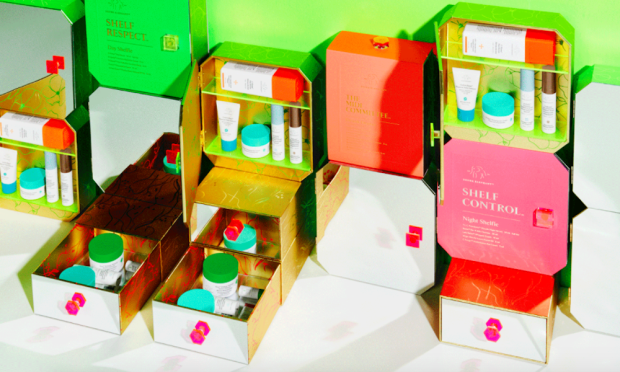Creating The Consumer Connection In The Clean Beauty Market

Skincare is a big global business — worldwide, consumers spent $135 billion on skincare products in 2018, a 60 percent increase over what consumers were spending even a decade ago. And that growth is forecast to keep on coming, at least for the next several years — skincare is expected to be worth over $180 billion in the next five years. In the U.S., skincare product sales increased 13 percent to $5.8 billion, while makeup sales perked up a mere 1 percent during the same period.
Driving much of that growth is the increasing consumer clamor for “clean” skincare products — though what constitutes such a product is somewhat a matter of interpretation. With the exception of color additives, ingredients used in cosmetic products are outside the jurisdiction of Food and Drug Administration (FDA) regulation, which means there is no official list of “safe” or “unsafe” ingredients officially in circulation. There are independent groups that have signed on to make such lists, separating the good from the bad, but whether individual product makers sign on with that list is completely up to them.
Mostly, Drs. Molly Wanner and Neera Nathan noted in a review of the clean cosmetics movement for the Harvard Business Review, the clean cosmetics movement focuses on removing one of three types of worrisome ingredients from the product lineup: irritants and allergens; potential hormone disruptors; and potential carcinogens. Those are the broad strokes; the specifics get a little more esoteric because in the absence of an official standard, firms bestow the “clean cosmetics” label on themselves based on their own short list of “bad” ingredients.
The lack of any concreteness around what actually is or isn’t a clean product can create frustration for consumers, who are never sure if what they are buying lives up to its packaging — but it is also something of a stumbling block for entrepreneurs selling products in the clean skincare arena. If every new thing out there promises consumers a toxic-free, all-natural skin care regimen, it quickly becomes almost meaningless as a differentiator from a branding standpoint.
It is what has pushed some brands, like Drunk Elephant, to reject the label entirely — despite the fact that since its founding in 2013 the Drunk Elephant brand has been associated with being one the pioneers of the clean cosmetics movement. Today, Founder and CEO Tiffany Masterson is less likely to refer to Drunk Elephant as a clean company, and more likely to call it a “clean complementary firm” that is more focused instead on pursuing its vision of offering the consumer a better end-to-end skincare experience.
As she noted in an interview with Forbes, since clean is more or less whatever a brand decides it is, it is at this point a more confusing designator for consumers than a clarifying one. Drunk Elephant, she said, has hung its health concerns around its notion of “biocompatibility” and offering products with ingredient lists not linked to past problems in consumer skincare. That means the firm’s internal shortlist of bad ingredients isn’t positioned so much around “clean” as around ingredients that it believes are triggers for problematic skin.
“Some are clean, none are scary. The suspicious six ingredients that I avoid aren’t related to the ‘clean’ beauty movement at all. I call them the ‘suspicious six’ because in my broad experience, once removed from the routine, most issues resolve. This has more to do with the health of the skin organ itself, and the support of the all-important acid mantle — skin’s first line of defense,” she said.
The so-called suspicious six are essential oils, drying alcohols, silicones, chemical sunscreens, fragrances/dyes and SLS. The brand also avoids what it calls “question mark ingredients” like petroleum distillates, formaldehydes, BHA, phthalates and coal tar ingredients that are increasingly being flagged by lots of “all natural” and “clean beauty” firms as problematic add-ons to topical creams.
“Our reasoning: If consumer perception is negative about a certain ingredient, right or wrong, we simply find a great alternative to put minds at ease, so that’s what we did,” Masterson said.
And the commitment to putting the customer’s mind at ease extends beyond the purchase of the initial product itself and is perhaps as important, if not more important, than the firm’s specific formulation for skincare. The company also, according to Masterson, works very hard to hold customers’ hands through the entire process through and beyond their purchase. They need to know not just what they are getting but how to use it, what to do if they have a negative reaction or don’t like it, when they should expect to see results and what exact results they can expect to see.
“It’s all about their experience and it’s pretty simple — they won’t come back if they aren’t satisfied,” she said.
And satisfying customers is hard, particularly in a world full of other clean (and “clean compatible”) retail firms offering their own variation on the purified product. The data, notably, is still out, according to Wanner and Nathan. While it is probably a good idea for people to be cognizant of what they put on their skin, as of yet there is little data demonstrating that making a switch to clean skincare products makes any kind of data-observable difference in consumers’ health outcomes.
But a firm that pairs the clean formulation with an end-to-end use guide, and an easy path to return and start over if it doesn’t work out as expected? Consumers might well remember that a bit better than they recall a list of six suspicious skincare product ingredients.
